The culture method of geranium how to raise healthy and beautiful geranium
Pelargonium (Latin name: Pelargoniumhortorum), also known as Hydrangea, Zenglahong, Shirahong, sunflower, anemone, mosquito repellent, foreign butterfly, etc., originated in South Africa, is a perennial herbaceous flower. The leaf has a long handle, the leaf margin is serrated, and the leaf surface has deep annular markings. Corolla usually 5-merous, inflorescences umbellate, growing at tip of straight pedicel. Because the flowers are as dense as balls, it is also known as hydrangea. The colors of red, white, pink and purple vary a lot. The florescence begins in early winter and lasts until the beginning of summer. Potted plants should be used for indoor and outdoor decoration; they can also be used as flowers in spring flower beds. So, what is the method of cultivating geraniums?
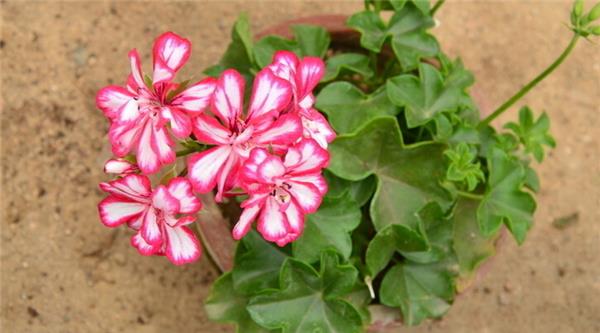
Culture methods of geraniums:
1. Soil: geranium has strong adaptability and can grow in all kinds of soil, but the sandy loam soil rich in humus grows best.
2. Watering: geraniums like dryness, hate dampness, and should not be watered too much in winter. When the soil is wet, the stem is tender, which is not conducive to the sprouting and opening of flower branches; long-term excessive humidity will cause plants to grow too long, flower branches will move up, and the leaves will gradually yellow and fall off.
3. Sunshine: geraniums need plenty of sunlight during their growing season, so they must be placed in the sun in winter. Lack of light, long stems and leaves, soft pedicels and poor inflorescence; buds in low light often bloom poorly and wither ahead of time.
4. Temperature: the geranium likes to be warm in winter and cool in summer. It can blossom normally when the indoor temperature is kept 15 ℃ every day in winter and the temperature at night is above 8 ℃. But the optimum temperature is 15-20 ℃.
5, fertilization: geraniums do not like big fertilizer, too much fertilizer will make geraniums grow too prosperous and not conducive to flowering. In order to bloom luxuriantly, watering dilute book fertilizer water (rotten bean cake water) once every 2 weeks can promote normal flowering by watering 800 times potassium dihydrogen phosphate solution every 7-10 days.
6. Insect pests: geraniums are poorly ventilated and too humid, and are prone to leaf spot and Fusarium wilt. After discovery, pay attention to ventilation, immediately remove sick flowers and leaves to prevent infection, and spray the same amount of Bordeaux solution to prevent and cure. The main pests are red spiders and whitefly, which can be sprayed with 1000 times of omethoate emulsion.
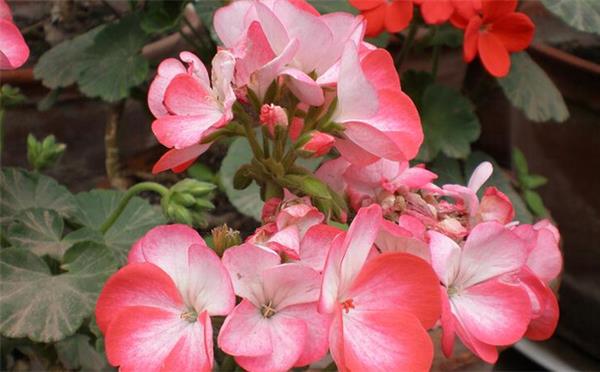
7. Pruning: pruning in order to promote more flowering of the geranium with more branches, it is necessary to pick the heart of the plant many times to promote it to increase branches and budding. After shedding the flowers, cut off the residual flowers at the right time, cut off the too dense and thin branches, so as not to consume too much nutrients, but it is cold in winter and should not be re-cut.
Matters needing attention in geranium culture
The main results are as follows: (1) in order to control the plant height and achieve the purpose of large and colorful flowers, except for the selection of dwarf geranium varieties, the application of growth regulators is very important. On the same day, the geraniums were planted in 12 or 15 rice pots for 2 weeks, and the leaves could be sprayed with 0.15% dwarf or longer spraying, once a week, twice in a row, with light for 14 hours a day. This can effectively control the height of the geraniums and provide high quality commercial potted flowers.
(2) it is more resistant to dryness, afraid of moisture, too much water is easy to cause plant death, if high temperature and high humidity, the root is easy to rot. Soil with good drainage, loose and rich in organic matter is required. The flowering period is long, and the full flowering period is from April to June. If the higher temperature is given in winter and properly managed, it can continue to bloom from September in autumn to June of the following year.
Geranium is a perennial herb from South Africa. It not only has good ornamental effect, but also has high economic value. It can be used in the treatment of a variety of diseases. Its extract can also be used for beauty and beauty, and is suitable for all skin. It can deeply clean skin, restrain pores, balance oil secretion and so on. So, what are the kinds of geraniums?
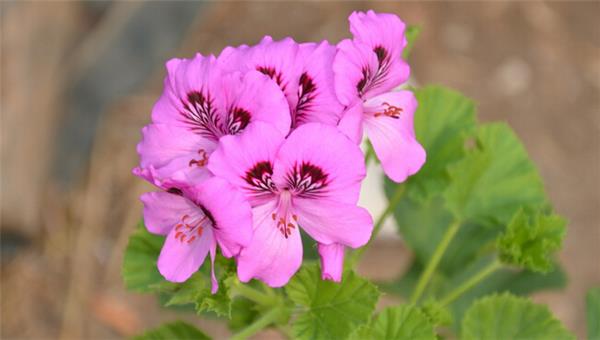
Horseshoe geranium: plant height 30-HO rice. It gets its name because of the obvious dark brown horseshoe pattern in its leaf edge. The petals are of the same color, dark red to white; the upper two petals are very short and the petals are narrowly cuneate. This species produces many varieties of colored leaves.
Home geranium: also known as butterfly geranium, foreign butterfly. The whole plant has soft hairs. There are no hoof lines on the leaves, and the teeth of the leaf margin are sharp and irregular. The flowers are large, with white, light red, lavender and other colors. It gets its name because of two red or purple patches on its petals.
Pelargonium: also known as Fujimoto geranium, Ivy leaf pelargonium. The stem is semi-trailing, and the plant is ten-day or scandent. Leaves peltate, slightly glossy. The flowers are small, 4-8 flowers gather, and the flowers are white, pink, red, purple and pink. Flowering in winter and spring.
Aromatic geranium: also known as scented geranium, round-leaf geranium. The stem is thin and weak, and the new branches and leaves are often clustered at the top of the stem. Umbels, flowers small, white, upper two petals with red-purple markings. Touch the leaves with your hands. That is, emit an attractive fragrance.
Fragrant leaf geranium: also known as touch incense. Semi-shrub. Leaves palmate, 5-7-parted, lobes pinnately lobed again. The flowers are pink or light red, with purplish red markings in the center, and the upper two petals are larger. Flowering in summer.
Chrysanthemum leaf pelargonium: stems with long hairs. The leaves are palmately parted, and the lobes are subdivided into linear shapes. The whole plant is covered with white powder. The flowers are rose-red with purple spots and stripes. Flowering in summer.
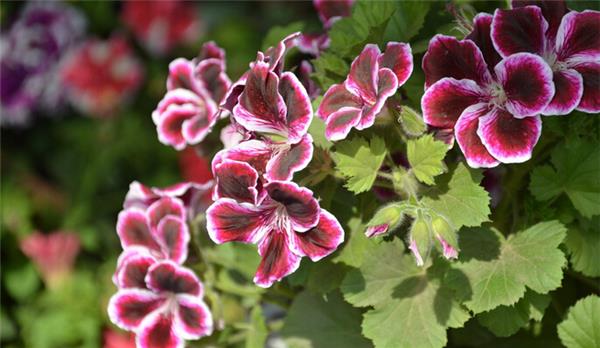
Beautiful flowers can add color to our home and our courtyard. Successful flower culture is not only a way of self-cultivation, but also a kind of enjoyment of beauty. So, what are the functions of geraniums?
Psychological effect
Geraniums are a tonic for the nervous system that soothes anxiety, depression and boosts mood. Restore mental balance, and because it can also affect the adrenal cortex, it relieves stress.
Physiological effect
Pelargonium essential oil has the functions of stimulating the lymphatic system and diuresis, which can enhance each other to help the body remove excessive body fluids quickly and effectively. Can be used to treat cellulitis, humoral retardation and ankle edema; can help liver and kidney detoxification; can treat jaundice, kidney stones and a variety of urethral infections; can also help many women reduce premenstrual fluid retention symptoms.
Cosmetic value
Geraniums are suitable for all kinds of skin conditions because they balance sebum secretion and make the skin full. May be good for eczema, burns, herpes zoster, herpes, ringworm and frostbite. It is also good for loose, blocked pores and oily skin. It can be called a comprehensive skin cleanser. As the geranium can promote blood circulation, it will make the pale skin more ruddy and energetic after use. Used in incense fumigator or topdressing with towels can stimulate the lymphatic system and strengthen the circulatory system.
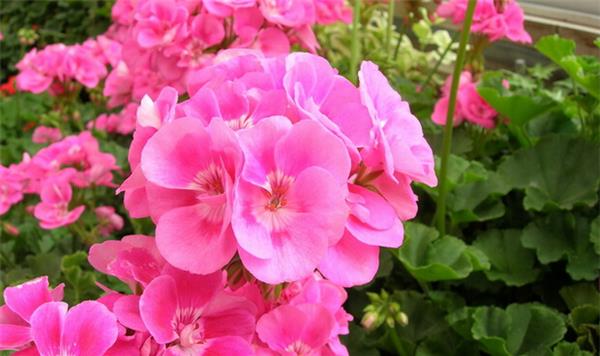
Geranium is highly valued abroad, and Hungary has even designated it as the national flower. I have never heard of reports and examples of the toxicity of geranium. some clinical trials have also proved that the extract of geranium is harmless to the human body, while in Germany, the use of geranium extract to make herbs has also been approved, so friends who cultivate geraniums can rest assured to cultivate and watch.
Beautiful flowers can add color to our home and our courtyard. Successful flower culture is not only a way of self-cultivation, but also a kind of enjoyment of beauty. So, what are the functions of geraniums?
Psychological effect
Geraniums are a tonic for the nervous system that soothes anxiety, depression and boosts mood. Restore mental balance, and because it can also affect the adrenal cortex, it relieves stress.
Physiological effect
Pelargonium essential oil has the functions of stimulating the lymphatic system and diuresis, which can enhance each other to help the body remove excessive body fluids quickly and effectively. Can be used to treat cellulitis, humoral retardation and ankle edema; can help liver and kidney detoxification; can treat jaundice, kidney stones and a variety of urethral infections; can also help many women reduce premenstrual fluid retention symptoms.
Cosmetic value
Geraniums are suitable for all kinds of skin conditions because they balance sebum secretion and make the skin full. May be good for eczema, burns, herpes zoster, herpes, ringworm and frostbite. It is also good for loose, blocked pores and oily skin. It can be called a comprehensive skin cleanser. As the geranium can promote blood circulation, it will make the pale skin more ruddy and energetic after use. Used in incense fumigator or topdressing with towels can stimulate the lymphatic system and strengthen the circulatory system.

Geranium is highly valued abroad, and Hungary has even designated it as the national flower. I have never heard of reports and examples of the toxicity of geranium. some clinical trials have also proved that the extract of geranium is harmless to the human body, while in Germany, the use of geranium extract to make herbs has also been approved, so friends who cultivate geraniums can rest assured to cultivate and watch.
- Prev

Must see the cultivation method of Dryopteris Dryopteris at home what are the exquisite ways to feed Dryopteris?
Must see the cultivation method of Dryopteris Dryopteris at home what are the exquisite ways to feed Dryopteris?
- Next

The cultivation method of Jiuli incense how to easily cultivate the beautiful Jiuli incense
The cultivation method of Jiuli incense how to easily cultivate the beautiful Jiuli incense
Related
- Wuhan Hospital Iron Tree Blooming Result Was Instantly Frightened by the Gardener Master
- Which variety of camellia is the most fragrant and best? Which one do you like best?
- What is the small blue coat, the breeding methods and matters needing attention of the succulent plant
- Dormancy time and maintenance management of succulent plants during dormancy
- Minas succulent how to raise, Minas succulent plant pictures
- What are the varieties of winter succulent plants
- How to raise succulent plants in twelve rolls? let's take a look at some experience of breeding twelve rolls.
- Attention should be paid to water control for succulent plants during dormant period (winter and summer)
- Watering experience of twelve rolls of succulent plants
- Techniques for fertilizing succulent plants. An article will let you know how to fertilize succulent plants.

